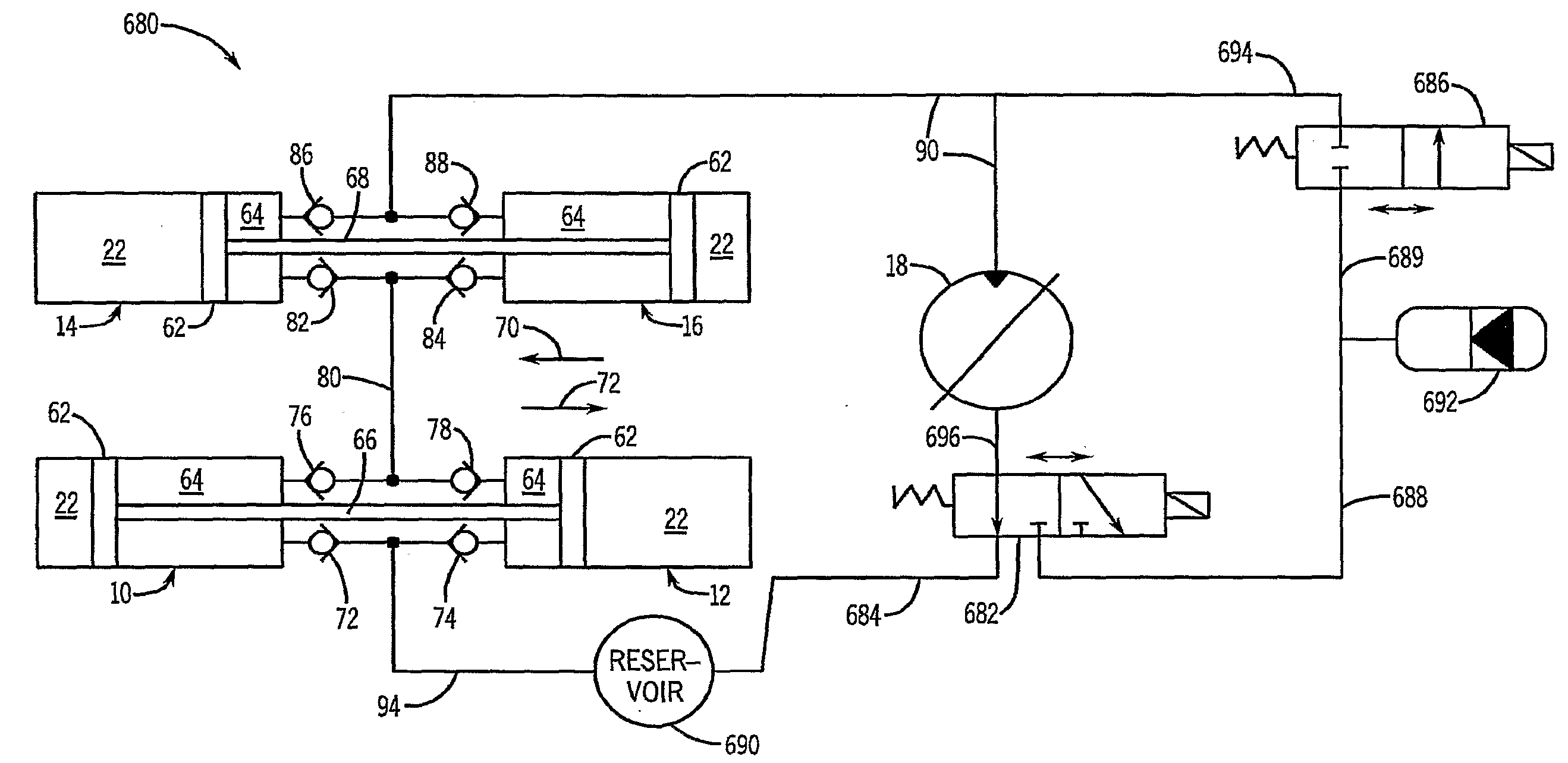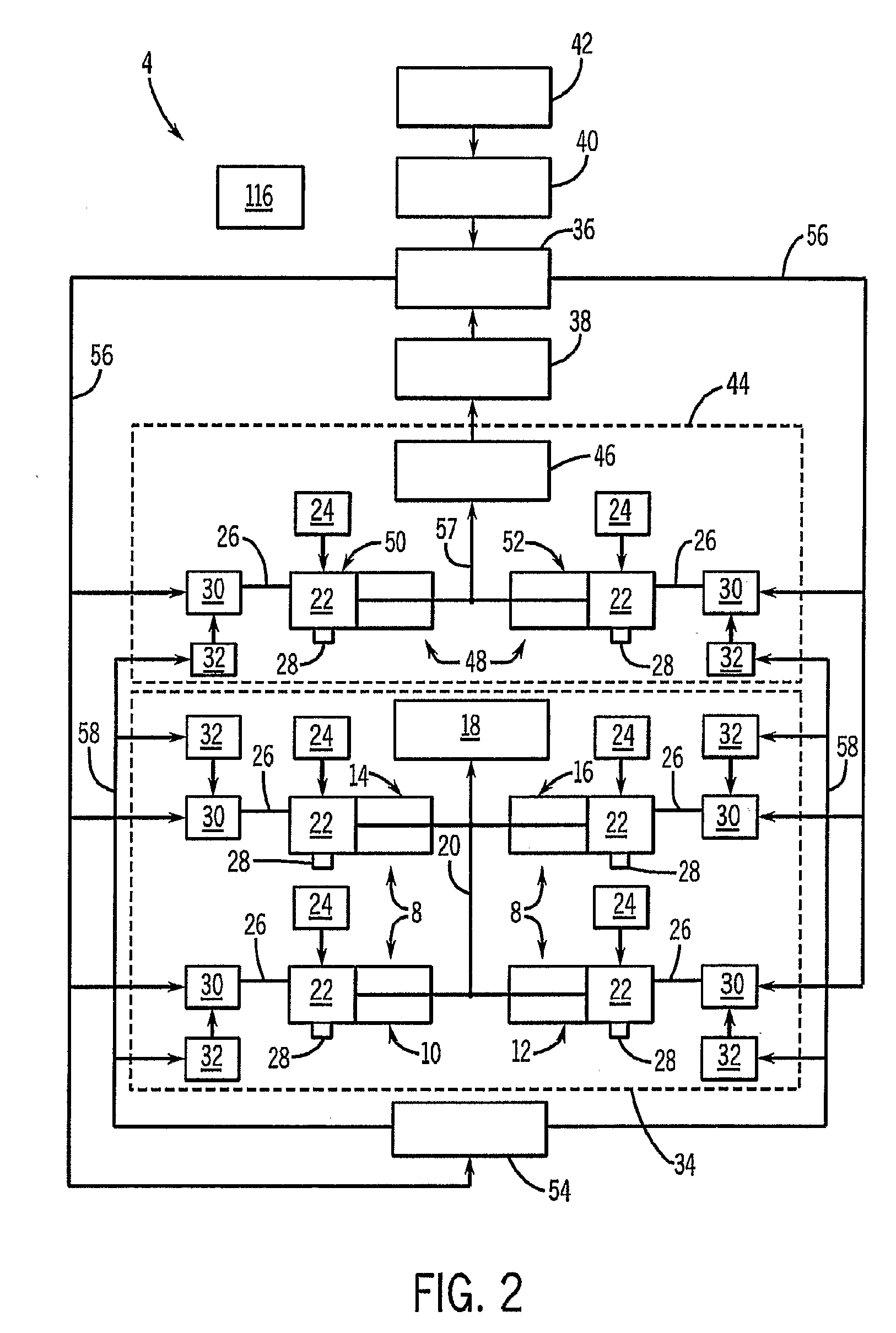Although such conventional,
crankshaft-based four
stroke engines are popular and are undergoing continuing improvement, such engines nevertheless suffer from several limitations.
First, the fuel efficiencies that can be achieved by such engines continue to limited, something which is disadvantageous particularly insofar as the world's supply of fossil fuels is limited, insofar as demand (and consequently price) for fossil fuels continues to increase, and insofar as concerns over the
impact of
fossil fuel-based internal combustion engines upon the global environment continue to grow.
The fuel efficiencies of such engines are limited for a variety of reasons including, for example, the weight of such engines, and frequent operation of such engines in an idling manner when no load power is truly required (e.g., when an automobile is at a stop light).
A further factor that limits the fuel efficiencies of many such engines that employ spark plugs in combination with high
octane fuels (rather than diesel engines) is that such engines, in order to avoid undesirable pre-ignition combustion events during the compression strokes of such engines, are restricted to designs with relatively modest (e.g., 9-to-1 or 10-to-1) compression ratios.
Second, because combustion strokes in such engines only occur during one of every four movements of a given piston, such engines by their nature require that an external input force / torque be applied to impart initial rotational
momentum to the
crankshaft of the engine in order for the engine to attain a
steady state of operation in which the engine (and its
crankshaft) is naturally able to advance to successive positions at which combustion events can take place.
Although such
starter and
flywheel components employed in conventional crankshaft-based four
stroke internal combustion engines are commonly used, and well-understood in terms of their operation, the inclusion of such devices within such engines adds complexity and / or significant weight (as does a crankshaft) to the engine that, consequently, can increase the cost of designing or building the engine, increase the complexity of maintaining or repairing the engine, and / or further reduce the fuel-efficiency of the engine.
Further, depending upon how effective the
starter of the engine is in terms of starting the engine, the need for a starter can further be an impediment to effective (and enjoyable) operation of the engine.
For example, it can be particularly frustrating to an operator when a starter mechanism fails or otherwise is incapable of starting an automobile engine in a short amount of time, particularly when the
operating environment is cold such as during wintertime.
Various other types of internal combustion engines likewise suffer from various limitations that may be the same, similar to, or different from the limitations described above.
For example, while many of the above-described crankshaft-based 4
stroke internal combustion engines are able to run fairly cleanly in terms of their engine exhaust emissions, in contrast many diesel engines as well as conventional crankshaft-based 2 stroke engines under at least some operating circumstances are unable to effectively combust all of the fuel that is delivered into the cylinders of those engines and consequently emit fairly high levels of undesirable exhaust emissions.
This is problematic particularly as there continues to be increasing concern over environmental
pollution, and various governmental entities are continuing to enact legislation and regulations tending to require that such engine exhaust emissions be restricted to various levels.
Yet even this type of engine can suffer from some of the same types of limitations described above.
In particular, such engines typically also are limited in their efficiency, and / or require additional components such as a starter and / or
flywheel in order to allow the engine to begin running in a steady-state manner, and to continue running in such a manner.
 Login to View More
Login to View More  Login to View More
Login to View More 


